Water is one of our most precious natural resources, and with climate change causing unpredictable rainfall patterns and water shortages in many regions, harvesting rainwater has become more important than ever. For gardeners especially, rainwater is a free and nutrient-rich source that can keep plants healthy while reducing dependence on municipal water systems.
If you’re looking to conserve water and make your gardening practices more sustainable, learning to harvest rainwater effectively is a step in the right direction. Here are some of the top ways to collect and store rainwater for gardening and water conservation at home.
Rain Barrels
Rain barrels are one of the simplest and most popular methods of collecting rainwater. These containers are typically placed at the base of a downspout connected to your home’s gutters. When it rains, water from your roof flows through the gutters and into the barrel, where it’s stored for later use.
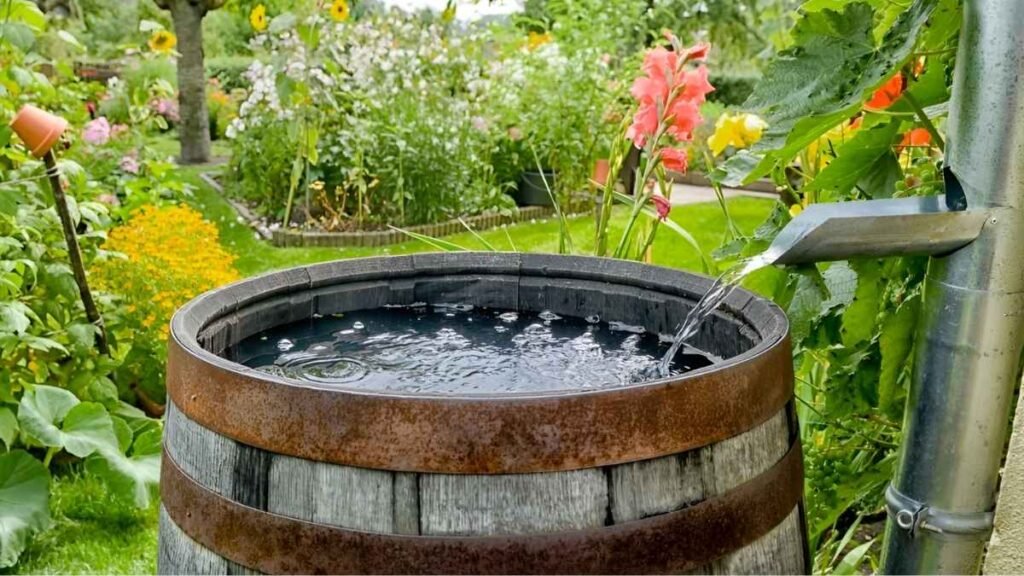
Most rain barrels have a spigot near the bottom, allowing you to easily fill watering cans or attach a hose. To prevent mosquitoes from breeding inside, it’s essential to use a screened lid or cover. You can also add a first-flush diverter to avoid collecting the initial runoff, which may contain debris or bird droppings from your roof.
Rain barrels are ideal for watering flower beds, lawns, and container plants. They are cost-effective, require minimal setup, and can be linked together for increased capacity.
Dry Wells
A dry well is an underground structure that collects and disperses rainwater into the soil. While it’s not designed for water storage in the traditional sense, it helps manage excess runoff and prevents water from pooling in unwanted areas.
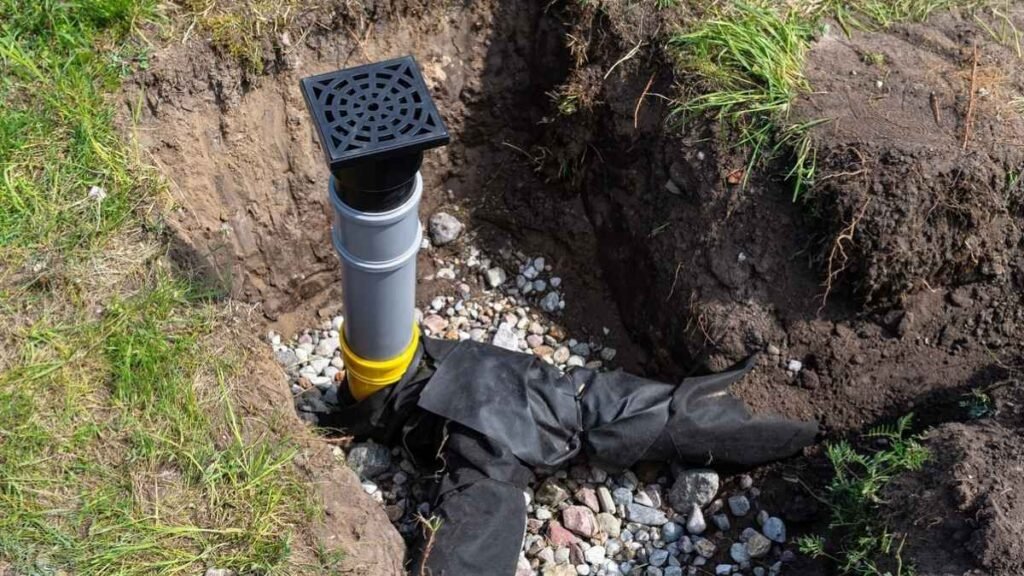
You can use a dry well in conjunction with other collection systems. For example, water from a rain barrel overflow or roof gutter can be diverted to a dry well to allow the water to slowly soak into the ground. This method is particularly useful for improving soil moisture in large garden areas and reducing erosion.
Installing a dry well involves digging a pit, lining it with landscape fabric, and filling it with gravel or perforated containers. It requires more planning and labor, but it supports long-term water conservation in your landscape.
Rain Chains
Rain chains are both functional and decorative alternatives to traditional downspouts. They guide rainwater from your roof to the ground in a visually pleasing way, often through a series of linked cups or chains. When positioned correctly, a rain chain can direct water into a storage container, planter, or rain garden.
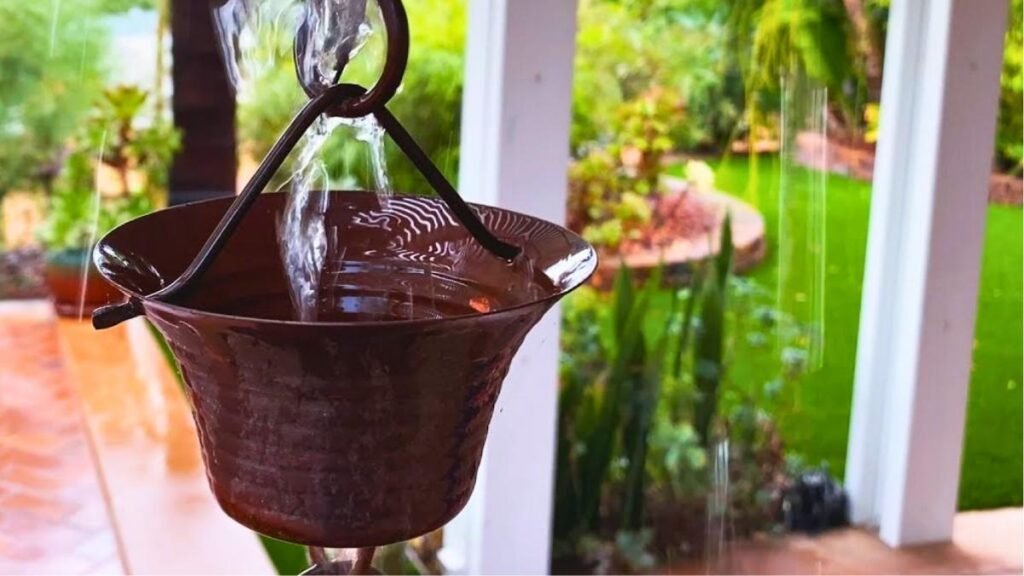
While they don’t store water themselves, rain chains can become part of a larger system by channeling water efficiently into barrels, basins, or the soil. Their aesthetic appeal also makes them a favorite choice for eco-conscious homeowners who want to add beauty and function to their gardens.
For best results, make sure the rain chain is installed at a slight angle and ends in a spot that promotes drainage or collection.
Rain Gardens
A rain garden is a shallow, planted depression that collects runoff from roofs, driveways, or other surfaces. It’s designed to temporarily hold water and allow it to soak into the soil, filtering pollutants and nourishing the plants.
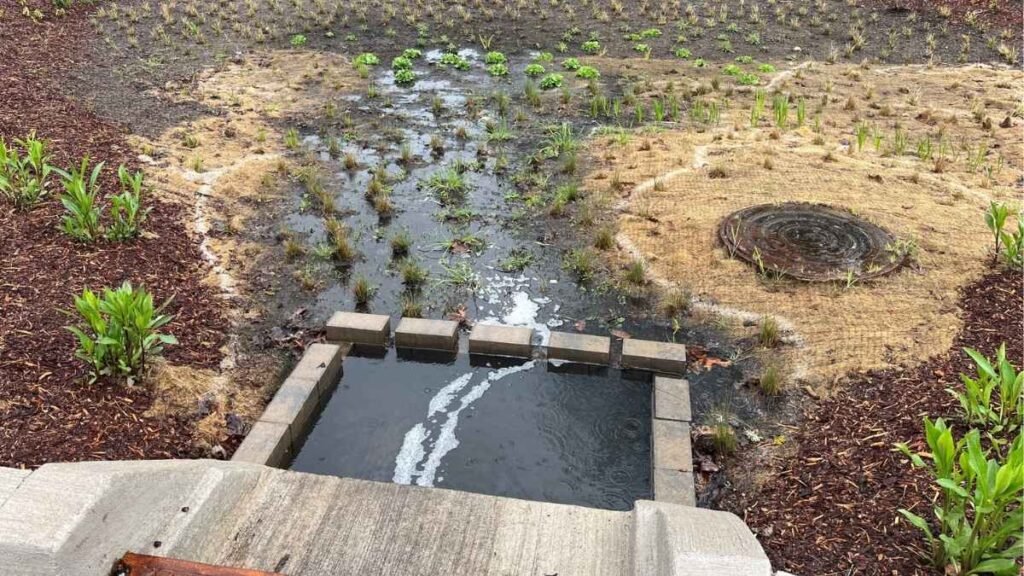
To build a rain garden, choose a low-lying area in your yard and dig a shallow basin. Fill it with native, water-tolerant plants and amend the soil with compost if needed. You can also use rocks or gravel around the edges for added drainage and aesthetics.
Rain gardens are a natural and low-maintenance solution for reducing runoff, recharging groundwater, and creating habitat for birds and pollinators. They don’t store water in tanks, but they allow it to be used effectively in the soil where it’s needed most.
Underground Cisterns
For gardeners with more space or a higher water demand, underground cisterns offer a large-scale solution for rainwater storage. These are typically buried tanks made from plastic, concrete, or fiberglass and can hold hundreds or even thousands of gallons of water.
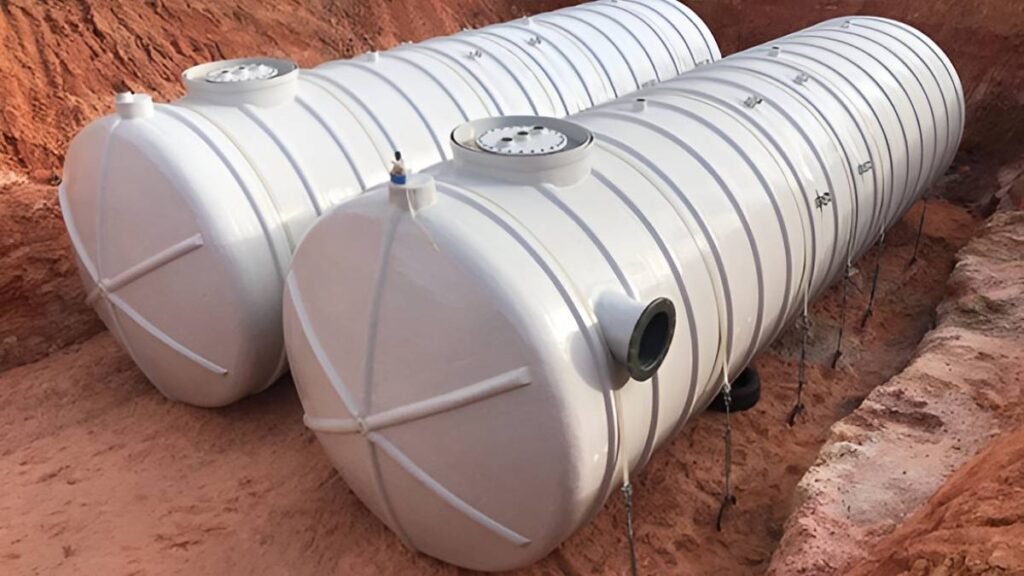
Rainwater is channeled from your roof and gutters into the cistern, which is usually fitted with filtration systems, overflow pipes, and pumps to help distribute the water when needed. Though installation can be complex and expensive, the payoff is a long-term, nearly invisible water storage solution that supports larger gardens or even whole-house non-potable use.
Cisterns can also be equipped with pumps to irrigate your garden automatically or to supplement drip irrigation systems.
Greywater Integration
While not technically rainwater, greywater (wastewater from sinks, showers, and washing machines) can be collected and used for gardening in combination with rainwater harvesting systems. When rain is scarce, greywater becomes a reliable source for non-potable uses like irrigation.
Greywater systems require careful planning and should be filtered to remove soaps and chemicals that may harm plants. However, when properly installed, they can significantly reduce your freshwater usage and keep your garden green during dry spells.
Combining rainwater harvesting with greywater recycling is an excellent way to close the water loop at home and maximize conservation.
Rooftop Collection Systems
If you’re looking for a more integrated approach, a rooftop collection system can be installed to directly capture rainwater and funnel it into storage tanks. These systems often include filters, screens, and diverters that remove debris before the water reaches your tank.
This method is particularly effective in areas with high rainfall, where even a modest roof size can yield significant water. For example, a 1,000-square-foot roof can collect over 600 gallons of water during a one-inch rainfall.
While some setup is required, rooftop systems are scalable and can be tailored to meet your garden’s specific water needs. They’re also efficient in making use of an otherwise unused surface area.
Tips for Using Harvested Rainwater in Your Garden
Once you’ve collected rainwater, it’s important to use it effectively. Here are a few tips:
- Use rainwater for watering plants at the base to avoid promoting leaf diseases.
- Avoid using rainwater for edible plants if it’s been collected from roofs with lead flashing or certain chemical treatments.
- Keep containers sealed or covered to prevent mosquito breeding.
- Clean gutters and filters regularly to ensure water quality.
Using stored rainwater early in the morning or late in the evening can also reduce evaporation and ensure your plants absorb the maximum moisture.
Final Thoughts
Harvesting rainwater isn’t just about saving money — it’s about making a conscious choice to live more sustainably. Whether you opt for a simple rain barrel or invest in an underground cistern, every drop you collect is a step toward more responsible water use.
These methods are accessible to gardeners of all levels and can be adapted to suit small urban patios or large rural landscapes. As water becomes an increasingly valuable resource, taking control of your supply through rainwater harvesting is not only wise but essential for the future of gardening.

